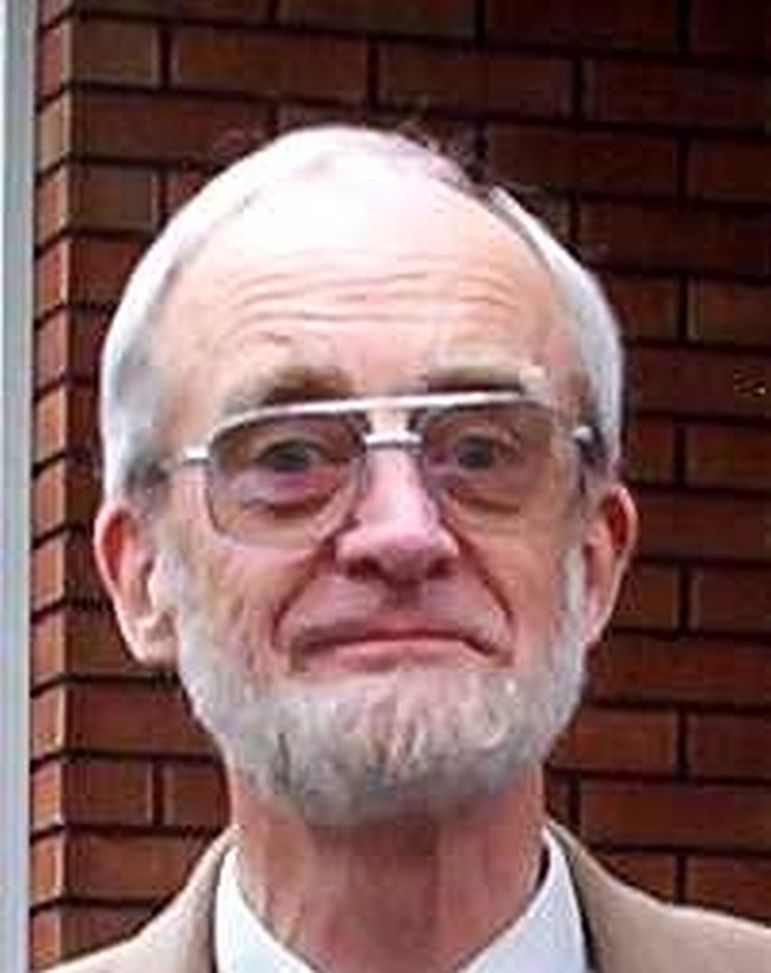Robert Harrison

Distinguished Research Professor
Research
(1) Quantum-mechanical/classical-physics theory of high-order hysteretic phenomena in ferromagnetic materials;
(2) Nonlinear phenomena in microwaves and electromagnetics.
Application
(1) Conventionally, high-order hysteretic phenomena in ferromagnets are simulated (if at all) by approximate empirical models, or else by large computer-intensive micromagnetic simulators. Instead, our physical “positive-feedback” theory provides compact, fast, and accurate code for designing magnetic recording systems, motors, generators, force transducers, loudspeakers and electronic power converters.
(2) We developed innovative CMOS microwave nonlinear-transmission-lines (NLTs) that can turn slow pulses into fast ones, or convert lower frequencies into higher ones by multiplying them by a factor of 2 or 3. Slow-wave technology minimizes NLTL length, saving space on the chip.
Activities
Life Senior Member, IEEE
Invited Presentations:
R. G. Harrison (2006), “How Ferromagnetism Really Works: a Simple Physical Theory”, IEEE Ottawa AP/MTT Chapter.
R. G. Harrison (2004), “Silicon-on-Insulator CMOS Nonlinear Transmission Lines”, Department of Electronics Seminar, Carleton University.
Journal Articles
R. G. Harrison, S. Steentjes (2019), ”Simplification and inversion of the mean-field positive-feedback model: Application to constricted major and minor hysteresis loops in electrical steels,” Journal of Magnetism and Magnetic Materials, 491(12)
DOI: https://doi.org/10.1016/j.jmmm.2019.165552
R. G. Harrison (2015), “Accurate mean-field modeling of the Barkhausen noise power in ferromagnetic materials, using a positive-feedback theory of ferromagnetism,” Journal of Applied Physics, 118(2), 023904, 2015.
DOI: http://dx.doi.org/10.1063/1.4926474 (Open access).
S. E. Zirka, Yu. I. Moroz, S. Steentjes, K. Hameyer, K. Chwastek, S. Zurek, R. G. Harrison (2015), “Dynamic magnetization models for soft ferromagnetic materials with coarse and fine domain structures,” Journal of Magnetism and Magnetic Materials, 394(11), pp. 229-236.
DOI: http://dx.doi.org/10.1016/j.jmmm.2015.06.082
S. E. Zirka, Yu. I. Moroz, N. Chiesa, R. G. Harrison, H. Høidalen (2015), “Implementation of inverse hysteresis model into EMPT –Part I: Static model,” IEEE Transactions on Power Delivery.
DOI: http://dx.doi.org/10.1109/TPWRD.2015.2416201
S. E. Zirka, Yu. I. Moroz, N. Chiesa, R.G. Harrison, H. Høidalen (2015), “Implementation of inverse hysteresis model into EMPT – Part II: Dynamic model,” IEEE Transactions on Power Delivery.
DOI: http://dx.doi.org/10.1109/TPWRD.2015.2416199
R. G. Harrison (2014), “Calculating the spontaneous magnetization and defining the Curie temperature using a positive-feedback model,” Journal of Applied Physics, 115(3), 033901.
DOI: http://dx.doi.org/10.1063/1.4861869 (Open access)
S. E. Zirka, Yu. I. Moroz, R. G. Harrison, and N. Chiesa (2014), “Inverse hysteresis models for transient simulation,” IEEE Transactions on Power Delivery, 29(2), 552-559.
DOI: http://dx.doi.org/10.1109/TPWRD.2013.2274530
S. E. Zirka, Yu. I. Moroz, R. G. Harrison, K. Chwastek (2012), “On physical aspects of the Jiles-Atherton hysteresis models,” Journal of Applied Physics, 112(4), 043916.
DOI: http://dx.doi.org/10.1063/1.4747915 (Open access)
R.G. Harrison (2012), “Modeling High-Order Ferromagnetic Hysteretic Minor Loops and Spirals Using a Generalized Positive-Feedback Theory,” IEEE Transactions on Magnetics, 48(3), 1115-1129.
R.G. Harrison (2011), “Positive-Feedback Theory of Hysteretic Recoil Loops in Hard Ferromagnetic Materials,” IEEE Transactions on Magnetics, 47(1), 175-191.
M. Li, R. E. Amaya, R. G. Harrison, and N. G. Tarr (2009), “X-Parameter Measurement of Pulse-Compression Nonlinear Transmission Lines,” Journal of Electrical and Computer Engineering, Article ID 5315, doi:10.1155/2010/415315.
R. G. Harrison (2009), “Physical Theory of Ferromagnetic First-Order Return Curves”, IEEE Transactions on Magnetics, 45(4), 1922-1939.
D. Kaddour, E. Pistono, J.-M. Duchamp, P. Ferrari, and R. G. Harrison (2006), “A Compact and Selective Low-Pass Filter with Reduced Spurious Responses, based on CPW Tapered Periodic Structures”, IEEE Transactions on Microwave Theory and Techniques, 54(6), 2367-2375.
E. Pistono, P. Ferrari, L. Duvillaret, J.-M. Duchamp, and R. G. Harrison (2005), “Hybrid Narrow-Band Tunable Bandpass Filter based on Varactor Loaded Electromagnetic-Bandgap Coplanar Waveguides”, IEEE Transactions on Microwave Theory and Techniques, 53(8), 2506-2514
R.G. Harrison (2004), “Variable-Domain-Size Theory of Spin Ferromagnetism”, IEEE Transactions on Magnetics, 40(3), 1506-1515.
Conference Publications
M. Li, R. G. Harrison, R. E. Amaya, J.-M. Duchamp, P. Ferrari, and N. G. Tarr (2007), “CMOS Varactors in NLTL Pulse-Compression Applications”, Proceedings of 37th European Microwave Conference, 1405-1408, Munich, Germany.
R. E. Amaya, M. Li, R. G. Harrison, and N. G. Tarr (2007), “Coplanar waveguides in silicon with low attenuation and slow wave reduction”, Proceedings of 37th European Microwave Conference, 508-511, Munich, Germany.
M. Li, R. Amaya, J.-M. Duchamp, P. Ferrari, R. G. Harrison, and N. G. Tarr (2007), “Low-Loss Low-Cost All-Silicon CMOS NLTLs for Pulse Compression”, IEEE MTT-S International Microwave Symposium, Honolulu, Hawaii.
Significant Publications
R. G. Harrison (2004), “A Physical Model of Spin Ferromagnetism”, IEEE Transactions on Magnetics, 39(2), 950-960.
M. Li, K. Krishnamurthi, and R.G. Harrison (1998), “A Fully-Distributed Heterostructure-Barrier Varactor Nonlinear-Transmission-Line Frequency Multiplier and Pulse Sharpener”, Special 1998 Symposium Issue of the IEEE Transactions on Microwave Theory and Techniques, 46(12), 2295-2301.
K. Krishnamurthi, S.M. Nilsen, and R.G. Harrison (1994), “GaAs Single-Barrier Varactors for Millimeter-Wave Triplers: Guidelines for Enhanced Performance”, IEEE Transactions on Microwave Theory and Techniques, Vol. 42(12), 2512-2516.
R.G. Harrison and X. Le Polozec (1994), “Non-Squarelaw Behavior of Diode Detectors Analyzed by the Ritz-Galérkin Method”, IEEE Transactions on Microwave Theory and Techniques, (42)5, 840-846.
Book Contribution
R.G. Harrison (2003), “Detectors and Mixers”, and “Frequency Multipliers and Dividers”, in Inder J. Bahl and Prakash Bhartia eds., Microwave Solid State Circuit Design, 2nd ed., John Wiley, New York.
Patents
R. G. Harrison and G.A. Kalivas (1987), “Microstrip Slotline Frequency Halver,” U.S. Patent No. 4,636,757 + Canadian Patent No. 1,225,126.
R. G. Harrison (1980), “Waveguide Frequency Divider”, U.S. Patent No. 4,228,411.
R. G. Harrison (1979), “Broadband Frequency Divider using Microwave Varactors,” U.S. Patent No. 4,152,680 + Canadian Patent No. 1,041,614.